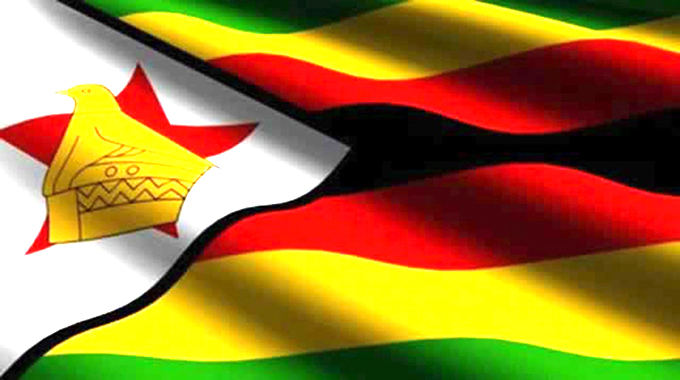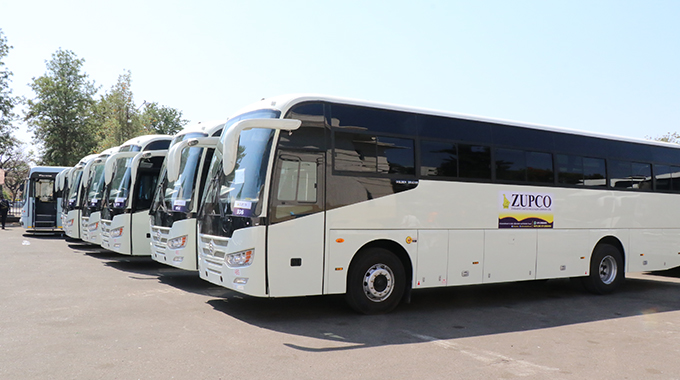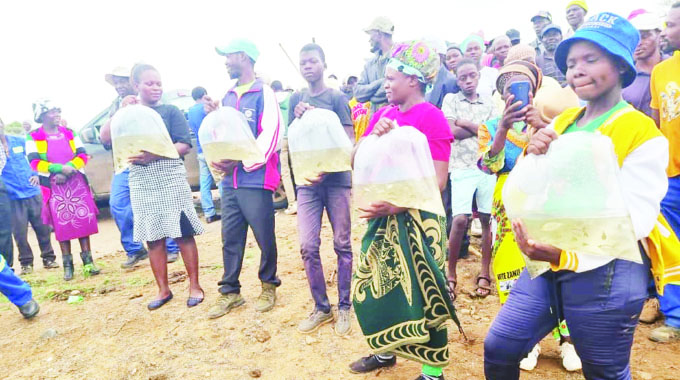Joy as Zim achieves demining milestone

Columbus Mabika
Features Correspondent
It is in the morning of November 12, 2021, and the summer temperatures are soaring.
The usually sleepy border area of Mukumbura is brought to life as people of all ages and from all walks of life brave the morning heat and distance to converge at Chisecha Primary School to celebrate another success story in the fight against the deadly remnants of war, landmines!
Before the director of ceremonies takes to the podium to kickstart proceedings, people break into songs of joy and dance on the land that was once a no go area owing to the presence of landmines.
The exciting event is the handover of landmine cleared land to Mashonaland Central Province by the Ministry of Defence and War Veterans Affairs.
Permanent Secretary in the Ministry, Mark Grey Marongwe, representing Minister Oppah Muchinguri-Kashiri, proceeds to hand over the land to Mashonaland Central Minister of Provincial Affairs and Devolution, Monica Mavhunga amid ululation and whistling from the crowd.
The land, measuring 6,95 square kilometres was cleared by HALO Trust, a non-governmental organisation working with the Zimbabwe Mine Action Centre.
A total of 50 254 anti-personnel landmines were recovered from the area and destroyed.
The land will directly benefit over 23 000 households in the area through farming and pastures.
The clearing of the land is a significant step in the right direction in the quest to achieve a mine free Zimbabwe by year 2025.
The local Chief Short Kanzou hailed the Government for the milestone achievement.
“The landmine problem in this area is gone.
“Some of our colleagues lost their lives and some could not be here to witness this milestone as they cannot walk because of injuries sustained from the landmines.
“We are grateful to the Government for liberating us from this deadly menace,” he said.
Mr Wonder Mako, a landmine victim who lost his right leg 32 years ago while working in his parents’ fields, lamented the negative effects of the landmines on his life.
“Life has never been the same since the day I lost my leg after a landmine explosion.
“I cannot do what others are doing and have spent most of my productive years just sitting and doing nothing,” he said.
The director of Zimbabwe Mine Action Centre, Colonel Mkhululi Bhika Ncube, said his organisation was working flat out to achieve a landmine free Zimbabwe by 2025.
He said in the quest to remove the lethal remnants of war, the Zimbabwe National Army’s National Mine Clearance Squadron was being complemented by four non-governmental organisations – Halo Trust, Mine Action Group, APOPO and Norwegian People’s Aid.
Colonel Ncube said at least 2 000 people had been injured by the landmines while 800 000 people’ had been affected throughout the country.
HALO Trust programme manager Mr Samuel Fricker said his organisation would continue to complement the Government’s landmine clearance efforts.
At the height of the liberation struggle, Rhodesian forces laid over three million anti-personnel landmines in eight minefields along the northern and eastern borders of the country with the aim of preventing the infiltration of freedom fighters into the country from Mozambique and Zambia.
Technical surveys carried out reveal that the initial landmine infested areas covered a linear distance of around 850km.
At least 25 000 hectares of communal land and 10 000 hectares of commercial farm land was covered by landmines and could not be used for any economic purposes.
Realising the continued negative effects of landmines, the Zimbabwe Government signed and ratified the 1997 Ottawa Mine Ban Treaty that compelled signatories to get rid of landmines by 2015.
However, because of economic sanctions imposed on the country by the West, Zimbabwe could not meet the deadline.
To date, more than 200 000 landmines have been removed with over 90 percent of the infested land having been cleared.







Comments